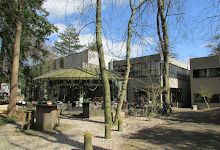Archive number: 44c
Title: Hamburger Concerto (Part 3 Medium 1)
Main Album: Hamburger Concerto
Track number: 5c
Genre: Progressive Rock Instrumental (Symphonic)
Studio: Olympic Studios 'B', 117 Church Road, Barnes, London SW13 9HL
Length: 4' 06” (20' 15” the whole)
Composer: Thijs van Leer
Musicians: Jan Akkerman – Electric Guitars (Fenders); Thijs van Leer – Hammond organ, ARP Synthesiser, Flute, Voices; Bert Ruiter - Bass; Colin Allen – Drums, Castanets, Percussion
Producer: Mike Vernon
Engineer: Bob Hall
Label: Polydor, Atco, EMI, Red Bullet, JVC, JVC Victor
Date of recording/release: January/March 1974; April 1974. CD – 1998, 2001, 2001, 2002, 2006
Notes: Next van Leer sings evoking an opera with female and male leads (05:23-06:18). No words are used but a form of scat. In 06:19-06:35 Akkerman's guitar with the effects pedal on leads, joined by various percussive instruments. Next comes a rather eastern section led by organ with castanets, other percussion then trumpet-like guitar (06:57) and rising and falling with more organ, guitar and percussion (06:36-08:04). A flute-led piece comes next with castanets, tambourine and drums backing (08:05-09:03). Akkerman then winds down with the guitar effects and heavy drums then cymbals (09:04-09:29).
Note on castanets (from Wikipedia)
A percussion instrument much used in Moorish, Ottoman, Ancient Roman, Italian, Iberian (especially flamenco) and Latin American music. A pair of concave shells joined on one edge by string are held in the hand and used to produce clicks for rhythmic accents or a ripping or rattling sound consisting of a rapid series of clicks. They are traditionally made of hardwood, though fibreglass is popular. In practice a player usually uses two pairs of castanets, one pair in each hand, with the string hooked over the thumb and the castanets resting on the palm with the fingers bent over to support the other side. Each pair will make a sound of a slightly different pitch. The higher pair (hembra - female), is usually held in the right hand, the larger (macho) in the left. They are sometimes attached to a handle, or mounted to a base to form a pair of machine castanets. This makes them easier to play, but also alters the sound, particularly for the machine castanets. The name (Spanish: castañuelas) is from the diminutive form of castaña, Spanish for chestnut, which they resemble. In Andalusia they are known as palillos (little sticks). The origins of the instrument are unknown. They feature in music by Bizet, Chabrier, Wagner, Rimsky-Korsakov, Ravel and others.





















No comments:
Post a Comment